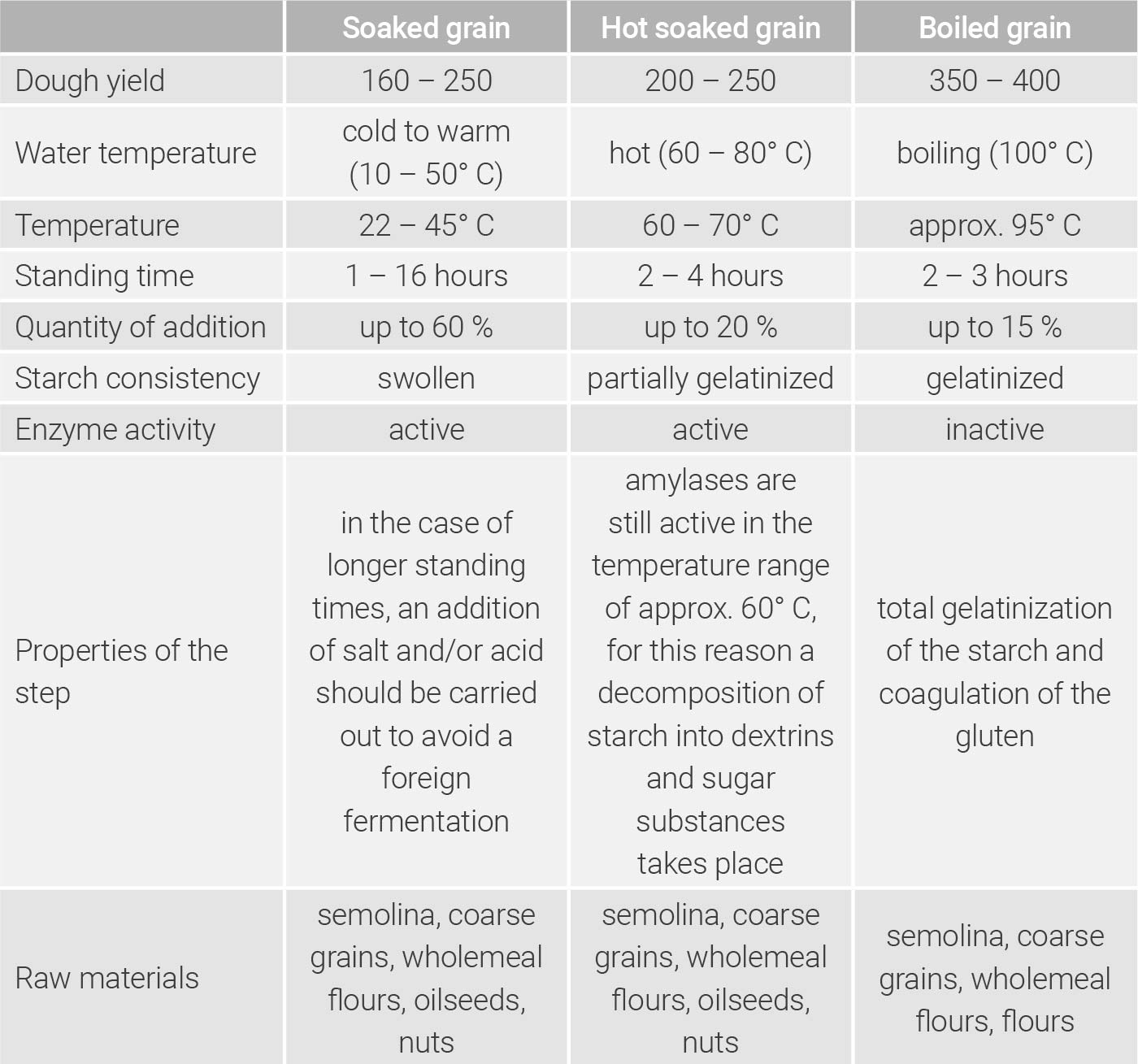Soaked grain, hot soaked grain and boiled grain in different variations are used in practically every bakery. Here, raw materials such as wholemeal flours, semolina, coarse grains, oilseeds and nuts are used. A difference between the individual precursors takes place based on the standing time, dough yield and the water temperature. The aim is to hydrate the coarse components in an optimum way so that the water content is balanced after baking.
When processing coarse grains, difficulties often arise due to the fact that the water absorption of the coarse grain particles in the dough is slowed so much that insufficient water is bound for the complete gelatinization of the starch in the baking process. To do justice to the slowed water absorption of coarse grain particles and to make an adequate water content possible, the use of soaked grain and boiled grain is recommended. For this purpose, these are swollen with a part of the water before dough preparation and added during dough preparation.
Alternatively, boiled grain can also be used as a precursor, but practically almost all of the starch is gelatinized as a result of the higher water temperatures and the process, however. In table 5.22, the different parameters of the individual precursors are contrasted with and compared to one another.

